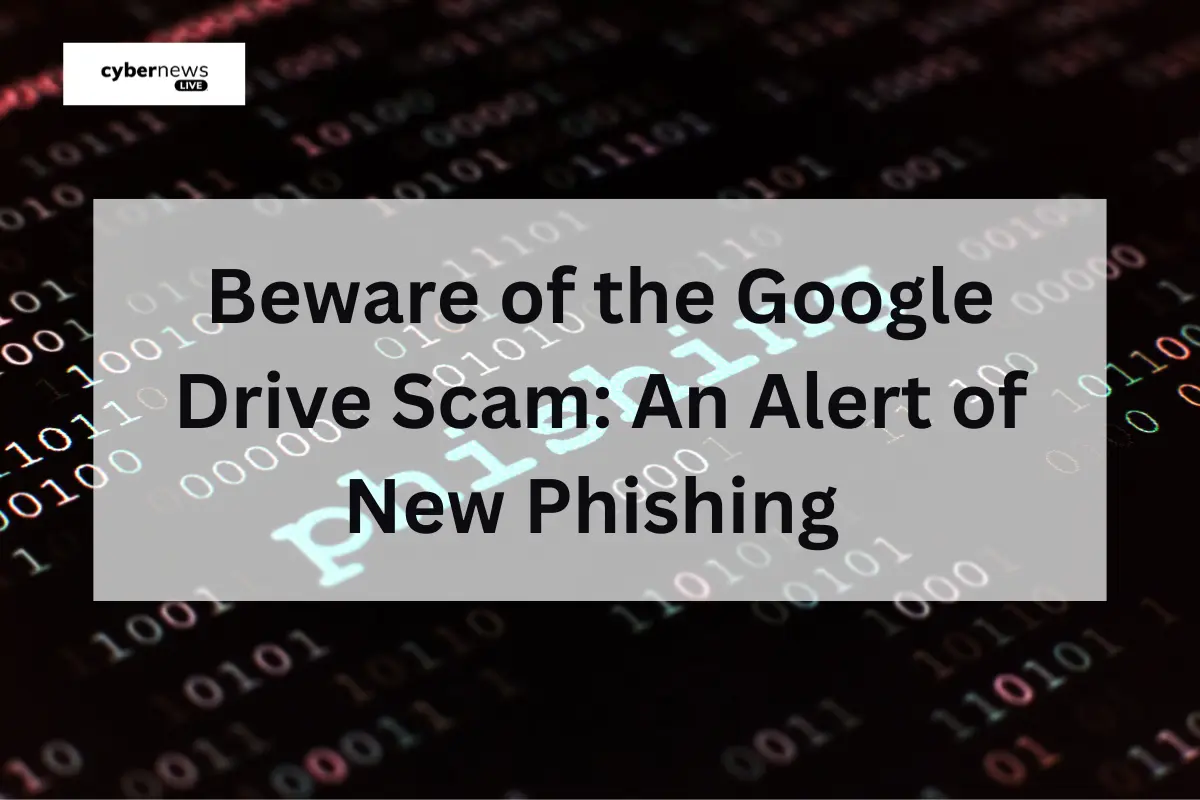
Beware of the Google Drive Scam: An Alert of New Phishing
The blog warns about the Google Drive scam, which involves fraudulent practices using the cloud storage service. Phishing attempts are commonly used in these scams, where criminals impersonate trustworthy organizations to trick victims into revealing personal information or login credentials. The scam can occur through phishing emails, fake login pages, or dangerous URLs. The blog explains how the scam takes place, how to prevent becoming a victim, and emphasizes the importance of staying vigilant and informed about phishing techniques. Measures to protect oneself include checking the authenticity of senders, scrutinizing email content, previewing URLs before clicking, avoiding suspicious links and downloads, using official apps or websites for access, enabling two-factor authentication, monitoring account activity, educating oneself and others about phishing, using security software, and reporting suspicious activity. Overall, the blog highlights the need to be cautious and proactive in order to protect personal information and online security.
A “Google Drive scam” is a term used to describe dishonest or fraudulent practices involving the cloud storage service Google Drive. Phishing attempts are a common component of these scams, in which criminals act as trustworthy organisations or employ deceptive techniques to fool victims into disclosing private information or login credentials.
Phishing emails, phone login pages, or dangerous URLs are some of the ways that these scams can appear. Their ultimate goal is to jeopardise user accounts and data security. To protect yourself from falling for these kinds of scams, it’s critical to exercise caution and confirm the legitimacy of any correspondence or link.
The usage of phishing assaults is increasing even as the world is starting to recover from the epidemic. Phishing awareness has become essential for preventing security incidents as phishing assaults become more frequent and sophisticated.
How did the Google Drive scam take place?
A Google Drive scam typically employs a number of deceptive approaches designed to trick users into exposing personal information, opening accounts without authorization, or downloading dangerous malware. This is a full account of how such a fraud could occur:
Phishing Emails or texts
Scammers frequently start a scam by sending prospective victims phishing emails or texts. These messages might purport to be official correspondence from Google or other reliable sources, citing account problems or alluring deals.
False substance and anxiety
The deceptive content of the emails creates anxiety or a sense of urgency that necessitates immediate action. Their alerts may be the result of a security breach, an expired account, or a critical document shared via Google Drive.
Adverse Connections or Attachments
The email contains attachments or links that appear to direct users to Google Drive or similar services at first look. These links frequently take users to phoney login sites that imitate the Google login page quite a bit.
False Login Pages
These impersonation pages ask users to submit their login information, such as their email address and password, and they appear real. Victims give personal information because they believe they are signing onto their Google account and are unaware of this.
Credential harvesting
Scammers collect and store user login credentials after they are entered. The victims fall for the fraud, unwittingly providing their email address and passwords.
Unauthorised Access
Using the credentials they have gained, scammers can access the victim’s Google Drive account without authorization. From there, they can view, modify, or take advantage of the victim’s files.
How can you prevent your device from a Google Drive scam?
Check the Sender’s Authenticity:
Make sure the email address is valid at all times. Look for typographical errors, odd domain names, or inconsistent email addresses. Typically, trustworthy domains are the source of legitimate messages.
Check Email Content for Concerns:
Examine the email carefully for any indications of phishing. Be wary of clumsy greetings, hurried demands, misspelt words, or poor language. If an email asks you to respond right now, proceed with caution.
Hover Your cursor Over Links to Preview URLs:
You can preview the URL that a link will lead to by hovering your cursor over it before clicking on it. Make sure the URL points to the trustworthy website you anticipate. Treat abbreviated URLs with caution.
Steer clear of dubious links and downloads:
Avoid downloading attachments or accessing links from emails that appear suspect, especially if you didn’t anticipate receiving such files. Delete these emails immediately.
Use Apps or Official Websites to Gain Access:
Use the official Google Drive mobile app or website to access Google Drive directly. Refrain from clicking on links from unidentified sources that purport to take you to Google Drive.
Turn on two-factor authentication (2FA)
Two-factor authentication is needed, this additional security measure makes sure that even in the case that your password is stolen, illegal access cannot occur without the second form of verification.
Review Account Activity Frequently
Keep an eye on any recent logins and device usage associated with your Google account. Inform Google of any strange or questionable activity right away.
Educate Both Yourself and Others
Keep up with the most recent phishing and fraud tactics. Teach others, including yourself, how to spot phishing attempts and stress the need for vigilance.
Use security software and keep your software updated
Make sure your antivirus programs should be up to date. Update your operating system, browsers, and plugins frequently to fix any vulnerabilities that scammers might be able to take advantage of.
Report Suspicious Activity
Mark an email as phishing and report it to Google if you get a suspicious email or believe it to be a phishing effort. This aids Google in enhancing its security and detection systems.
Conclusion
In conclusion, to protect your online security and personal information, you must remain alert and knowledgeable about Google Drive fraud. You can successfully defend yourself against falling for phishing attempts by confirming the legitimacy of the sender, exercising caution when reading emails, and avoiding dubious links.
Adding two-factor authentication, keeping an eye on account activity, and teaching others and yourself about phishing are all essential measures to strengthen your defences against this common online fraud. Recall that the best defence against online risks such as the Google Drive scam is to be proactive and careful.
CTA
The same Google Drive where you store all your information can be hacked, but you could be responsible for it if you are not aware of Google Drive scams and phishing threats. Hence read Cyber News Live articles.




